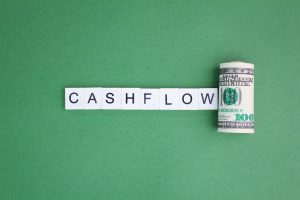A solo founder used to be a moon-lighter with a side hustle. Today that archetype powers the fully fledged bootstrap startup that runs on no code automation. The pattern recurs across product niches: one operator, a modular tech stack, and revenue that rivals a seed-funded team. This article profiles three ventures, Nomad List/Remote OK, Bannerbear, and Small Bets, and blends operational detail with research on entrepreneurial psychology. Their stories reveal how careful automation, strategic bootstrapping, and intrinsic motivation let a single keyboard support thousands of paying customers.

Why Staying Solo Works
Academic evidence suggests that individual entrepreneurs thrive when they pair self-efficacy with passion and creativity (Ferreira-Neto et al., 2023). Those traits align with the freedom that a solo structure offers. Meanwhile, digital technology lowers the marginal cost of scaling, especially in urban, opportunity-rich markets (Wu, Zhu, & Qu, 2024). Together, mindset and technology create a flywheel: the founder iterates quickly, ships often, and captures value before competitors can mobilize larger teams.
Tech Stack: The Multiplier
| Layer | Typical Tools | Function |
|---|---|---|
| Hosting | Vercel, Cloudflare Workers | Global edge deploys in seconds |
| Data | Supabase, PlanetScale | Managed databases to avoid ops toil |
| Automation | Zapier, Make, custom webhooks | Glue services without code |
| AI | OpenAI API, Pinecone | Support bots, content generation |
| Analytics & Billing | Plausible, Stripe, Mercury | Real-time metrics and finance |
Low-code and no-code platforms collapse development time for non-core tasks, letting founders focus on product differentiation. A multisector MDPI study shows that low-code adoption accelerates digital transformation while exposing governance gaps that small teams must monitor (Shi, Dong, & Gan, 2025). Solo operators dodge many governance hurdles because decision rights stay in one brain.
Case 1: Nomad List / Remote OK
Pieter Levels runs two public marketplaces that earn roughly $3 million per year, without employees. Cron jobs pull cost-of-living feeds, weather APIs, and job-board posts, then trigger static-site rebuilds. Disputes and edge-cases arrive in a shared inbox where a GPT-4 agent drafts context-aware replies the founder approves. Data-driven KPI automation mirrors the model proposed by Sishi and Telukdarie (2025), who demonstrate that machine-learning pipelines can update metrics faster than rule-based dashboards.
Case 2: Bannerbear
Jon Yongfook crossed the $1 million ARR line as a one-man SaaS. The service converts templates into images, video, and PDF through a REST API. Bannerbear itself is both product and back office: the same endpoint that customers call also generates social images for Yongfook’s newsletters, cutting marketing workload. The founder layers no code automation in Zapier to push trial conversions and detect churn.
Case 3: Small Bets
Daniel Vassallo quit Amazon to sell micro-courses and run a private community. Gumroad handles payments; Circle.so gates content; Stripe Tax automates filings. A recent MDPI study on financial bootstrapping among digital-economy entrepreneurs confirms that reinvesting internal cash, not raising equity, preserves autonomy and speeds iteration (Alhammadi & Rahman, 2025). Vassallo embodies that logic: every new workshop funds the next experiment.
Passion, Grit, and Flow
Frontiers research links entrepreneurial passion to higher intention-to-launch scores, mediated by creativity and self-efficacy (Ferreira-Neto et al., 2023). Solo founders reinforce those drivers through public build logs on X, weekly revenue screenshots, and a culture of “ship small, ship often.” Short feedback loops protect motivation and reduce burnout. When tasks do feel tedious, founders swap them for no code automation, staying in the flow channel where challenge meets skill.

Design Principles
- Events Over Employees. Triggers replace routine labor. Stripe-webhook + Zap = onboarding email, receipt, CRM update.
- APIs Everywhere. Each internal function becomes an endpoint. The practice reflects recommendations from low-code scholars who stress composable architectures (Shi et al., 2025).
- KPIs That Update Themselves. Smart indicators flagged by Sishi & Telukdarie (2025) inform pricing and retention moves nightly.
- Play Money, Not Venture Money. Self-funded cycles echo bootstrapping tactics that Alhammadi & Rahman (2025) found effective among resource-constrained founders.
- Learning Publicly. Community engagement multiplies marketing reach at negligible cost, sustaining the eudaimonic rewards that psychology research celebrates (Wu et al., 2024).
Risk Management Without Payroll
Running lean concentrates key-person risk. Founders mitigate through:
- Redundant Accounts. Secondary Stripe and AWS profiles guard against bans.
- Multi-Revenue Portfolios. Each profiled company earns from two or more products. Diversification echoes the “small bets” philosophy.
- Contractor Bursts. Complex one-off tasks (e.g., iOS SDK) go to freelancers on fixed scope.
Because liabilities stay low, a temporary revenue dip rarely triggers layoffs or culture shocks.
When To Hire
All three founders share a heuristic: hire only when (a) a repetitive task exceeds automation’s reach, and (b) the added margin from solving it covers salary at least 3×. Until then, tools win. That mind-set keeps overhead near zero and protects the bootstrap startup ethos.
A Solo Founder Roadmap
- Validate With Tiny Launches. Ship a working prototype in days, not weeks.
- Automate Any Task You Repeat Thrice. Zapier, Make, or a Lambda script beats manual work.
- Track A Single North-Star Metric. Smart KPIs surface bottlenecks automatically (Sishi & Telukdarie, 2025).
- Publish Progress. Public metrics attract users, peers, and accountability.
- Reinvest Profits. Internal cash outperforms venture funds in flexibility and speed (Alhammadi & Rahman, 2025).
Follow these steps, and your solo founder journey can evolve from side project to sustainable company without straying from no code automation principles.





































